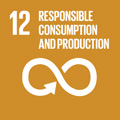- Docente: Roberta Biolcati
- Credits: 8
- SSD: M-PSI/08
- Language: Italian
- Teaching Mode: In-person learning (entirely or partially)
- Campus: Bologna
- Corso: Second cycle degree programme (LM) in Planning and managing of educational intervention in social distress (cod. 9228)
Learning outcomes
The student, at the end of the course must have a knowledge of the main strategies of intervention in various forms of addiction, particularly psychoactive substances addiction, with a view to promoting health and preventing "consumopatia" today targeted at pre-adolescence and adolescence in the first place, with an attention to the psychoeducational projects for addicted. The course will provide theoretical and practical knowledge based to prevent and intervene in an integrated way in the psychopathology of pathological addictions to achieve professional competence necessary for the treatment of pathological dependencies in psychosocial context.
Course contents
Program:
- Brief overview on "how to think about substance consumption today" as a theoretical reference paradigm.
- Promotion of well-being and primary prevention of pathological addictions (examples of strategies to prevent alcohol/drug related problems).
- Psychopathology in adolescence.
- Care and rehabilitation in pathological addictions in adulthood: the main intervention strategies "waiting for a solution" more effective.
- The treatment of cocainism.
- The help interview and the motivational interview.
- The conduction of psychoeducational groups in pathological addictions.
- The self-help groups
Special attention will be paid to the following themes Cocaine / Comorbidity / The group in the treatment of addiction. The technique of the interview in the help relations will be particularly deepened through simulations.
Readings/Bibliography
Bibliography for the exam:
Psicologia clinica e psicopatologia per l'educazione e la formazione (2009), Pani R., Biolcati R., Sagliaschi S., Il Mulino, Bologna (Cap. 3, 5, 8, 9).
Cocaina. Consumo, psicopatologia, trattamento (2009), Rigliano P., Bignamini E., Cortina, Milano (Cap. 1, 4, 6, 9).
Quale omogeneità nei gruppi?. Vasta, F. G., Girelli, R., & Gullo, S. (2013). Quale omogeneità nei gruppi. Alpes, Roma (Cap. 1, 3, 5, 6, 8, 12, 16, 20, 22).
Bibliography suggested
Eroina. La malattia degli oppioidi nell’era digitale. Giancane S. (2014). Torino: Gruppo Abele.
Un, due, tre stella! Storie di donne e di ordinaria violenza.
Guarini Antonia, 2016, Poiesis (Alberobello).
Le dipendenze senza droghe. Shopping compulsivo, internet e gioco d'azzardo (2006), Pani R., Biolcati R., Utet, Torino.
Le compulsioni psicopatologiche. Tra controllo degli impulsi e dipendenza (2014), Pani R., Sciuto A., FrancoAngeli, Milano.
Dinamiche e strategie del colloquio clinico (2006), Pani R., Sagliaschi S., Carocci, Roma.
Teaching methods
Lectures and practical exercises.
Assessment methods
The final exam consists of an oral examination based on three sentences.
Teaching tools
Slides and practical exercises.
Office hours
See the website of Roberta Biolcati
SDGs


This teaching activity contributes to the achievement of the Sustainable Development Goals of the UN 2030 Agenda.
